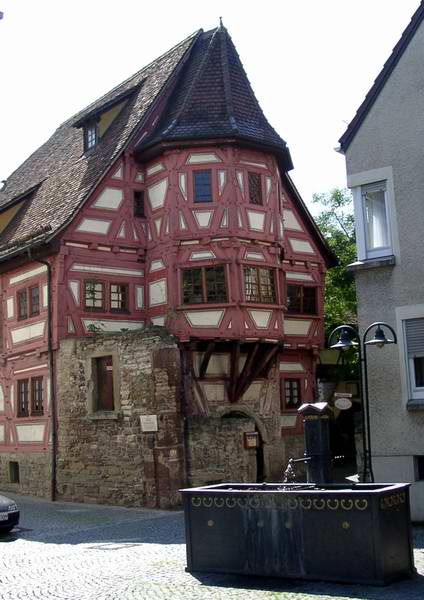|
Beguinage
A beguinage, from the French language, French term , is an architectural complex which was created to house beguines: lay religious women who lived in community without taking vows or retiring from the world. Originally the beguine institution was the convent, an association of beguines living together or in close proximity of each other under the guidance of a single superior, called a mistress or prioress. Although they were not usually referred to as "convents", in these houses dwelt a small number of women together: the houses small, informal, and often poor communities that emerged across Europe after the twelfth century. In most cases, beguines who lived in a convent agreed to obey certain regulations during their stay and contributed to a collective fund. In the first decades of the thirteenth century much larger and more stable types of community emerged in the region of the Low Countries: large ''court'' beguinages were formed which consisted of several houses for beguin ... [...More Info...] [...Related Items...] OR: [Wikipedia] [Google] [Baidu] |
Groot Begijnhof, Leuven
The Great Beguinage of Leuven () is a well-preserved beguinage and completely restored historical quarter containing a dozen streets in the south of downtown Leuven, Belgium. About in size, with some 300 apartments in almost 100 houses, it is one of the largest remaining beguinages in the Low Countries. It stretches on both sides of the river Dyle (river), Dyle, which splits into two canals inside the beguinage, thus forming an island. Three bridges connect the parts of the beguinage. The complete beguinage is owned by the Katholieke Universiteit Leuven, University of Leuven and used as a campus, especially for housing academics. History As a community for unmarried, semi-religious women (see Beguines and Beghards, beguine), the Beguinage of Leuven originated in the early 13th century. The oldest written documents date back from 1232. A Latin inscription on the church mentions 1234 as founding date. The community is presumably a few decades older. Local historians from the 16th c ... [...More Info...] [...Related Items...] OR: [Wikipedia] [Google] [Baidu] |
Our-Lady Ter Hooyen
The small beguinage O.L.V. Ter Hooyen is situated in southern area of Ghent. This beguinage was built on the ‘Groene Hooie’, between the ‘Hooipoort’ and the ‘Vijfwindgatenpoort’. That is how this little beguinage got its name. The history of the small beguinage O.L.V. Ter Hooyen in Ghent In Western-Europe the era of the beguinages started in the 12th century. In Ghent they started building 2 beguinages in 1234. They were founded by the countesses Johanna and Margaretha of Flanders. A large part of the beguinage leaned against the city wall. It gave shelter to the beguines coming from small nobility and the newly formed middle class. The beguinage as it is now dates mostly of the 17th and 18th century. In the 19th and 20th centuries it was partly restored, but the restorations are hardly noticeable. With the French occupation of Belgium the beguinage with all it possessions became property of the Commissie der Burgerlijke Godshuizen van de Stad Gent.:nl:Klein Begijnhof ... [...More Info...] [...Related Items...] OR: [Wikipedia] [Google] [Baidu] |
Begijnhof Sint-Truiden1
A beguinage, from the French term , is an architectural complex which was created to house beguines: lay religious women who lived in community without taking vows or retiring from the world. Originally the beguine institution was the convent, an association of beguines living together or in close proximity of each other under the guidance of a single superior, called a mistress or prioress. Although they were not usually referred to as "convents", in these houses dwelt a small number of women together: the houses small, informal, and often poor communities that emerged across Europe after the twelfth century. In most cases, beguines who lived in a convent agreed to obey certain regulations during their stay and contributed to a collective fund. In the first decades of the thirteenth century much larger and more stable types of community emerged in the region of the Low Countries: large ''court'' beguinages were formed which consisted of several houses for beguines built around ... [...More Info...] [...Related Items...] OR: [Wikipedia] [Google] [Baidu] |
Beguine
The Beguines () and the Beghards () were Christianity, Christian laity, lay religious orders that were active in Western Europe, particularly in the Low Countries, in the 13th–16th centuries. Their members lived in monasticism, semi-monastic communities but did not take formal religious vows. Although they promised not to marry "as long as they lived as Beguines", to quote an early Rule of Life, they were free to leave at any time. Beguines were part of a larger spiritual revival movement of the 13th century that stressed imitation of Jesus' life through voluntary poverty, care of the poor and sick, and religious devotion. Etymology The term "Beguine" (; ) is of uncertain origin and may have been pejorative. Scholars no longer credit the theory expounded in the Encyclopædia Britannica Eleventh Edition, ''Encyclopædia Britannica'' Eleventh Edition (1911) that the name derived from Lambert le Bègue, a priest of Liège. Other theories, such as derivation from the name of St. B ... [...More Info...] [...Related Items...] OR: [Wikipedia] [Google] [Baidu] |




